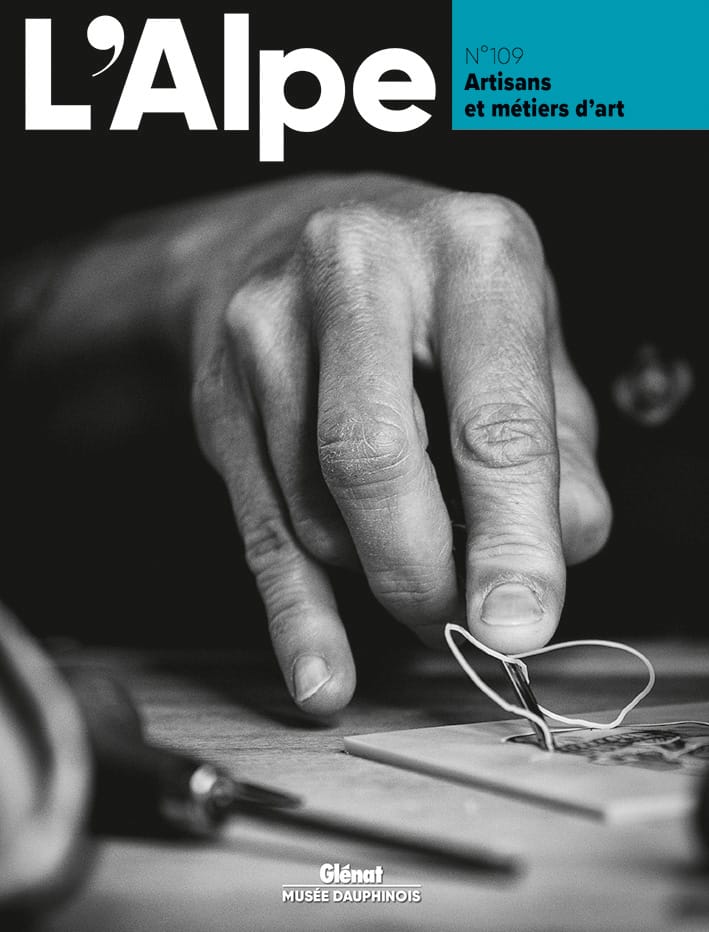Translations : Cary Bartsch
Written for people looking for information with meaning, L’Alpe is the first review devoted to the many cultures and heritages of Alpine Europe. Its ambition is to provide information, language barriers not withstanding. As your guide, L’Alpe looks at the people who, from the meandering Danube to the Rhône, have adapted to an exceptional climate. A cross between a book and a magazine, it draws on the first to provide background documents on a main theme, supported by rigorous analysis, an insistence on quality and the notoriety of renown authors. From the second, it adopts a quarterly rhythm for regular contributions to current debates, rich illustrations, the insatiable curiosity of its journalists and a necessarily didactic approach. Though rigorous in its approach to knowledge, L’Alpe is not a scientific journal. It calls on the contributions of history, geography, archaeology, ethnology, etc. to shed light on the meaning of the traces left by man on the mountain environment. And it is also open to current debates on the future of the Alps and other mountains in the world.
The art of flying
Icarus and da Vinci are the source of inspiration for Claudia Marchesin and Serge Reynaud, who create unusual aerial sculptures in their workshop in the Trièves, at the foot of the Vercors range. Using birds as their models, they prepare flying contraptions in minute detail. Prepare for takeoff to Wonderland!
1784-2011: a history of (flying) madmen
Air travel in the Alps was born of the daring do of ingenious inventers and talented pioneers capable of taking (occasionally) wild risks. From Henri Fabre, creator of the first seaplane, and Joseph Thoret, an initiator of airborne tourism, to Bertrand Piccard who flies using the power of the sun, here is a portrait gallery of some of the marvellous (Alpine) madmen and their strange machines.
From mountain trooper to aviation pioneer
In the early 1900s, the Mercantour range saw the initial (somewhat crazy) experiments of an artillery captain convinced that heavier-than-air craft would in fact fly. To the point of inventing, much later, a bizarre aerodrome.
Crossing the Alps from 1910 to 2010
One century after the first flight across the Alps by Jorge Chavez in 1910, we followed the same itinerary, memorable for a number of reasons, with the author of this article as the pilot! Real life following on the heels of history in a heart-felt adventure.
Hippies take to the air
Flight means freedom. Easier access started in California with the hang glider in the 1960s, but took off in the larger public 20 years later with the development of the paraglider in the Alps. Even today, these sports lie at the origin of very strong social networks.
One flew over the sheep herd
Matthieu Roulet is a shepherd in the Champsaur region, on the southern edge of the Écrins range in the Hautes-Alpes department. He guides the grazing beasts and dreams with the birds. He knows his mountain, the trails, every little nook as well as the thermal updrafts and summer breezes that he rides with his paraglider. On summer afternoons, after a nap, he unfolds his glider and keeps an eye on the herd from on high…
The saga of the Cassini
Map makers, geographers and astronomers for generations from the end of the 1600s to the beginning of the 1800s, the Cassini family drew maps of France of unparalleled accuracy for that time. These scientific and artistic treasures are conserved in the map library of the National geographic institute. We used some of the marvellous Alpine sections for the reproductions offered to our subscribers in 2011 and 2012.
Stone idol and ice mummy
Sergio Toppi, the last of the great Italian « sequential artists », tells in his own paradoxical and mocking way the fabulous history of Ötzi, the mummy discovered in an Alpine glacier. It is not the first time that the artist from Milan, born in 1932, has addressed mountains and mineral metaphors.
Italy at 150. Now what?
Does the celebration of Italy’s 150th birthday still mean anything at a time when national borders are giving way to transnational regions? This is a chance to reflect on the new territorial entities and what identity means in a changing Europe.


